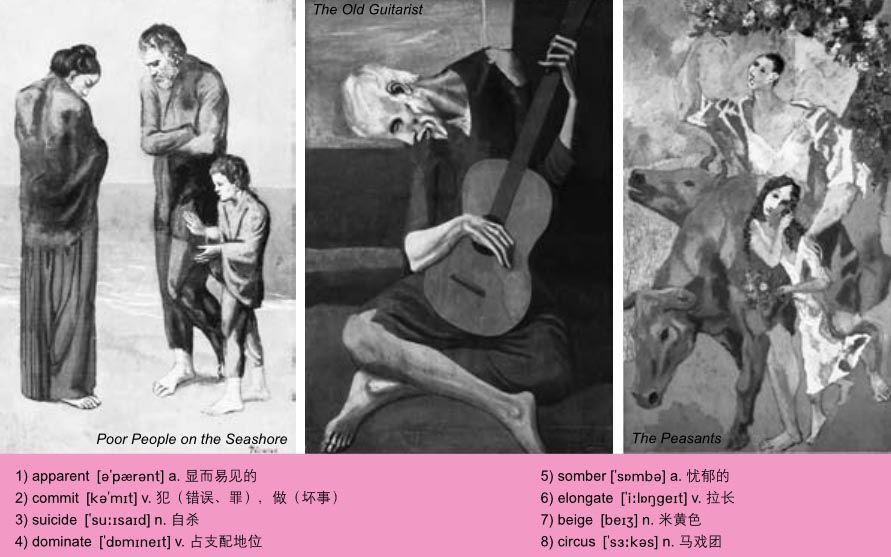巴勃罗·毕加索:不安分的艺术大师
2013-11-11byNeilDucket
by Neil Ducket
Pablo Picasso grew up in Spain where he was born on October 25th, 1881. His father was a painter and art teacher. Pablo liked to draw from an early age. Legend has it that his first word was “piz,” short for “pencil” in Spanish. It soon became 1)apparent that Pablo had little interest in school, but was an extremely talented artist.
When he was 14, Picasso attended a famous art school in Barcelona. A few years later he went to another school in Madrid. However, Picasso was bored with the classic teachings of art school. He didnt want to paint like people hundreds of years ago. He wanted to create something new.
In 1901, Picassos close friend Carlos Casagemas 2)committed 3)suicide, after which Pablo became very sad. Around the same time he began painting in Paris. For the next four years, his paintings were 4)dominated by the color blue. Many of the subjects were sad and 5)somber looking. He painted people with 6)elongated features and faces. Some of his paintings from this period(Blue Period) include Poor People on the Seashore and The Old Guitarist.
Eventually, Picasso got over his depression. He also fell in love with a French model. He began to use warmer colors in his paintings including pinks, reds, oranges, and 7)beiges. Art historians call this time in Picassos life the Rose Period. He also began to paint happier scenes such as 8)circuses. Some of his paintings from this period include The Peasants and Mother and Child.
In 1907, Picasso produced a painting unlike anything he or anyone else had ever painted before, a work that would 9)profoundly 10)influence the direction of art in the 20th century: Les Demoiselles dAvignon. The painting is considered the 11)precursor to Cubism注1, a style pioneered by Picasso and Georges Braque注2. In Cubism, the 12)subjects are 13)analyzed and broken up into different sections. Then the 14)sections are put back together and painted from different 15)perspectives and angles.
In 1912, Picasso began to combine Cubism and 16)collage. This was where he would use sand or plaster in his paint to give it texture. He would also 17)apply materials such as colored paper, newspapers, and wallpaper to his paintings to give them added dimension. Some of Picassos Cubism paintings include Three Musicians and Portrait of Ambroise Vollard.
Although Picasso would continue to experiment with Cubism, around 1921 he went through a period of painting more classical style paintings. He borrowed ideas from 18)Renaissance painters such as Raphael. He created powerful characters that almost appeared to be three-dimensional, like statues.
